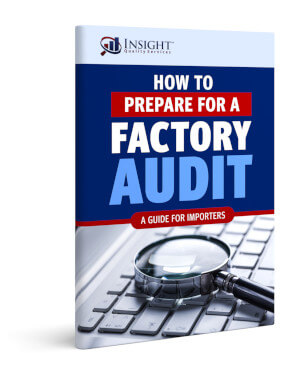Over the past several years, reshoring has become a hot topic among U.S. manufacturers and brands. With rising tariffs, increased geopolitical uncertainty, and a desire to bring production closer to home, many companies are evaluating whether it’s possible to manufacture their products in the United States again.
However, while the idea of reshoring is appealing, the reality is far more complex.
In the following video, our founder, Andy Church, breaks down the key reasons why reshoring is so difficult in practice:
Watch: Why Is It So Difficult to Reshore Manufacturing to the US?
What Makes Reshoring So Challenging?
Several core challenges make reshoring difficult for U.S. companies:
1. Lack of Skilled Labor
Many industries moved their production overseas decades ago. That shift caused entire categories of skilled labor to disappear from the U.S. workforce. For example, there is little to no domestic production left in categories like jewelry, footwear, and apparel — and if it exists, it’s often small-scale or boutique-level manufacturing.
2. Higher Labor Costs
U.S. labor costs are significantly higher than those in countries like China, Vietnam, or India. For labor-intensive products, this makes domestic manufacturing economically unviable for most brands — unless they’re targeting the luxury or made-in-America markets specifically.
3. Strict Regulatory Environment
Manufacturing in the U.S. comes with a wide range of regulatory requirements. In addition to product compliance, manufacturers must meet OSHA standards, environmental regulations, and more. These regulations raise the bar — and the cost — for compliance compared to many overseas facilities.
4. Lack of Infrastructure
Quite simply, many factories that once existed in the U.S. are gone. The machinery, supply chain partners, and factory networks required to make specific product types are no longer in place. Rebuilding that infrastructure would require massive investment, time, and political will.
5. Time to Ramp Up
Even if reshoring is possible, it’s not fast. Ramping up production means finding or building factories, training workers, and completing a great deal of due diligence. This is a long-term strategy, not a quick fix.
Understanding the reshoring challenge also requires understanding why offshore manufacturing — especially in China — became so dominant in the first place.
In this second video, Andy Church shares insight into how China built itself into the world’s manufacturing powerhouse:
Watch: Why Is China So Dominant in Manufacturing?
How China Became the World’s Factory
China’s dominance didn’t happen overnight. It was built over decades through a combination of government support and market factors:
1. Government Incentives & State-Owned Enterprises
China’s central government has long prioritized manufacturing. Many factories receive state support — either directly through ownership or via financing and incentives that help them scale.
2. Massive Workforce Migration
The government encouraged millions of people to migrate from inland rural areas to coastal cities, supplying factories with an enormous, relatively low-cost labor force.
3. Technology Transfer from the West:
Over time, China moved from producing low-cost, low-quality goods to high-quality, complex products. Much of this evolution came from foreign companies setting up operations in China and transferring expertise.
4. Economies of Scale & Infrastructure
China’s ability to produce at massive volumes has led to pricing and efficiency advantages that few other countries can match.
5. Rising Domestic Demand
As China’s middle class has grown, domestic consumption has added even more momentum to its manufacturing engine.
Looking Ahead: A Global Approach to Sourcing
While reshoring will continue to be explored, the reality is that China won’t be easily replaced. That said, companies are actively diversifying their supply chains — exploring new suppliers in countries like Vietnam, India, Mexico, and others across Asia and Latin America.
If you’re considering reshoring — or nearshoring — and need help evaluating a new factory, we can help.
At Insight Quality, we provide factory audits, product inspections, and lab testing services across multiple regions. Whether you’re exploring new opportunities in the U.S. or diversifying to other low-cost countries, our team can help you vet potential partners and minimize your risk.
Need help evaluating a new manufacturer? Learn more about our factory audit services and get in touch with us.
Free Guide
How to Prepare for a Factory Audit
A factory audit helps you assess a supplier's systems, capacity, workplace environment, or capabilities to ensure they meet your requirements as a buyer.
But which type of audit should you conduct, and which points should you cover on your checklist? In this free guide, you'll learn how to run an effective supplier assessment.





0 Comments